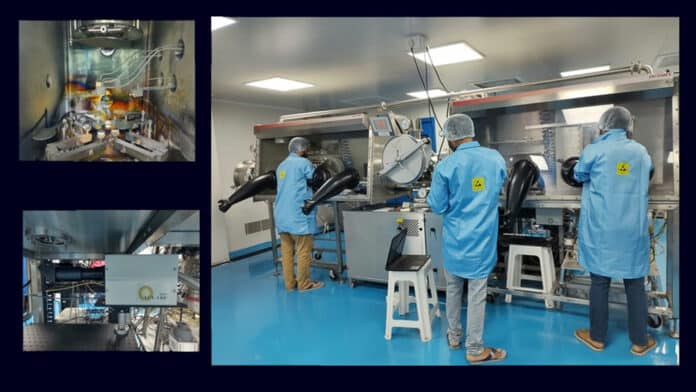Creating novel, top transparent conducting electrodes as alternatives to indium tin oxide is essential for implementing flexible solar cells on inexpensive, opaque substrates like steel foils. Such integration will also lead to the value addition of steel foils for roofing applications.
IIT Kanpur scientists have developed organic solar cell gadgets that combine the organic polymer PTB7 as a donor and PCBM as an acceptor. Solar cells can convert a steel roof into an energy-producing device more efficiently than currently. The MoO3/Au/MoO3 top electrode was used to fabricate the devices on opaque steel substrates. The study conducted at Prof. Ashish Garg’s lab at IIT Kanpur showed how multi-layered electrodes with the configuration MoO3/Au/MoO3 might be integrated with organic solar cells.
MoO3 is a great choice as a capping layer for improved light coupling throughout the visible region, resulting in up to improved twofold transparency over an Au-only film. This improvement in the optical transmission of MoO3/Au/MoO3 films, as studied by optical ellipsometry, suggests that higher refractive indices and lower extinction coefficients of MoO3 films compared to Au films make MoO3 films an excellent choice for capping layers.
Additionally, as shown by XPS studies, the metallic Mo+4 cations at the Au/MoO3 interface enhance the metallic character of the MoO3 film close to the interface, reducing the resistivity of the trilayer MoO3/Au/MoO3, which is close to twice that of ITO.
Scientists noted, “Organic solar cell devices fabricated on opaque steel substrates with a MoO3/Au/MoO3 top electrode clearly showed improvement in the photovoltaic performance by 1.5 times, compared with those obtained with single layer top metal electrodes.”
Journal Reference:
- L. Sowjanya Pali et al. Development of MoO3/Au/MoO3 Top Transparent Conducting Electrode for Organic Solar Cells on Opaque Substrates. Energy Technology. DOI: 10.1002/ente.202100689
